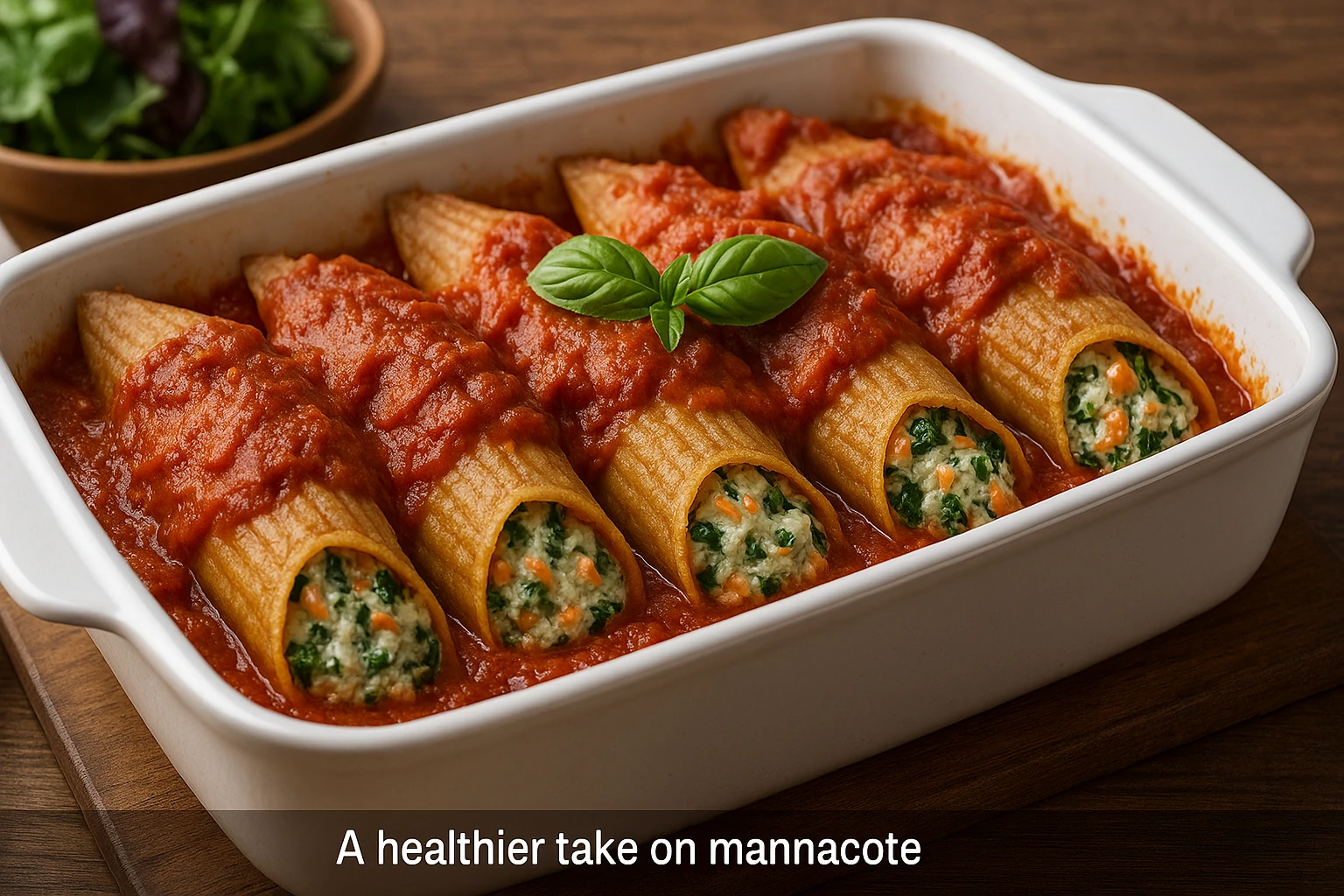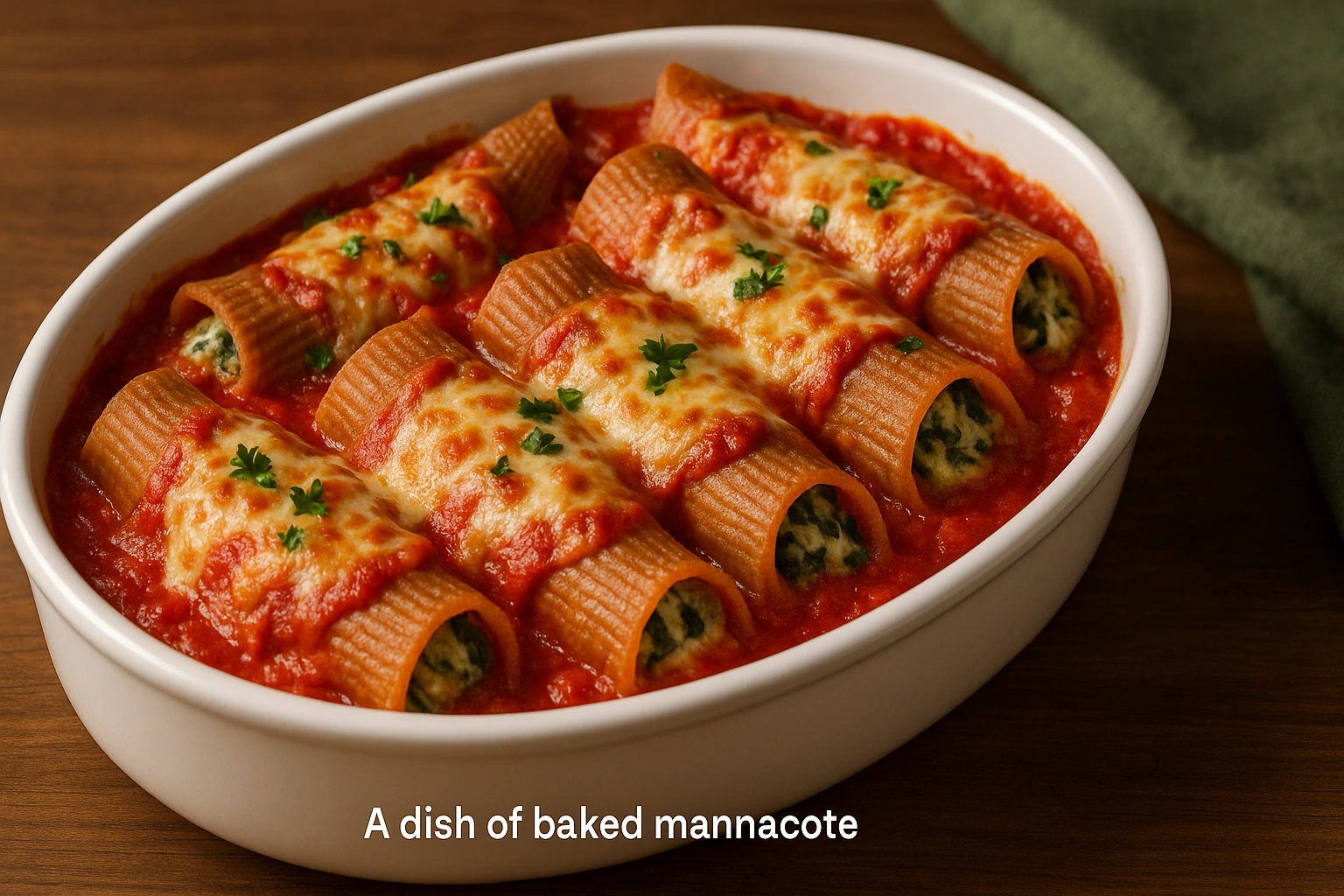Mannacote may sound like a rich dish. Some people mix it up with manicotti. Both dishes use large pasta shells with heavy fillings. Both bake in sauce and show up on family tables. But is mannacote good for your health? Or does it hurt your diet?
This article breaks down mannacote step by step. It looks at calories. It covers the protein. It explains how the dish fits into daily eating. It also shows ways to make it healthier. You do not need expert skills to understand this. You only need facts that help you eat smarter.
Creamy and cheesy meals feel good. They bring warmth and comfort. But rich meals often come with risks. Extra fat can cause weight gain. Some foods raise your sugar or cholesterol. Mannacote can stay in your diet if you know what to watch.
Read on. Learn how mannacote works inside your body. Find out which ingredients help or harm. Pick better options when you cook. This guide keeps it simple, honest, and useful.
What Is Mannacote?
Mannacote is a baked pasta dish. It uses large shells or tubes. These shells hold cheese, meat, or vegetables. The cook places them in a tray. Sauce covers them. Then the tray goes into the oven.
The word sounds Italian. Some think it comes from “manicotti.” Others say it started as a family term. The dish often includes cheese, tomato sauce, herbs, and sometimes ground beef or spinach.
Mannacote feels soft and creamy. It tastes rich. Kids enjoy it. Adults love it. It fits holidays, birthdays, and weekend meals.
Let’s now look at how it affects your health.
TimesHealthMag Nutrition: Expert Analysis and Safe Diet Advice
Calories in Mannacote
Calories give your body energy. But too many calories lead to fat gain. That is why tracking intake matters.
One serving of mannacote gives 300 to 600 calories. The number depends on size and filling. A simple cheese mix keeps it lower. Adding meat or more cheese raises the total.
The bulk of the calories comes from pasta, cheese, and sauce. Some trays offer two or more servings. Many people eat more than they realize. Restaurants serve big portions.
To stay safe, watch how much you serve. Use a smaller plate. Add salad or steamed vegetables. These steps help lower the meal’s load.
Protein in Mannacote
Protein helps build and fix body parts. Your body needs it every day. Mannacote gives protein, but some sources may bring issues.
Ricotta and mozzarella offer protein. Meat fillings give more. A plate can offer 10 to 20 grams.
The problem is fat. Cheese adds fat along with protein. Some meats carry cholesterol. You can switch to lean meat. You can add beans or spinach.
Choose clean protein. Try tofu or lentils. Mix in herbs to boost taste. Mannacote has protein, but balance is the key.
Carbs and Sugar Content
Carbs give energy. But too many carbs turn to fat. Mannacote has pasta, and pasta brings carbs.
Most people use white pasta. White pasta breaks down fast. It lacks fiber. That raises blood sugar fast. Some sauces also contain hidden sugar.
A plate may contain 30 to 60 grams of carbs. If you add bread or dessert, the count rises.
Try whole wheat pasta. It has more fiber. Make your own sauce with no added sugar. Add leafy greens to slow digestion.
Fats in Mannacote
Fat adds taste. It also adds risk. Mannacote has cheese, cream, and sometimes butter.
A serving may give 10 to 25 grams of fat. A big part may be saturated fat. That kind of fat raises bad cholesterol.
Use light cheese. Choose low-fat ricotta. Skip heavy cream. Use herbs to build flavor. Avoid butter and oils where you can.
These changes lower risk but keep taste strong.
Vitamins and Minerals
Mannacote is not full of vitamins. But the right fillings help.
Spinach adds iron. Tomatoes bring vitamin C. Carrots help with vitamin A. Cheese gives calcium and some B vitamins.
Add more vegetables to raise the value. Use garlic and fresh herbs. Bell peppers boost color and vitamin C.
Make your tray more colorful and your meal more complete.
Health Risks and Concerns
Eating mannacote often brings some risks. The dish has high sodium. That raises blood pressure. It has saturated fat. That harms the heart. Carbs spike blood sugar.
These risks grow with large portions. They grow when meals lack balance. People with heart or sugar problems should be careful.
But one meal does not break your health. The trick is control. Smaller servings. Better ingredients. Smarter choices.
How to Make Mannacote Healthier
You can enjoy this dish and stay healthy. Small steps make big change.
Use whole grain pasta. Pick light cheese. Add spinach or mushrooms. Use lean meat. Add herbs instead of salt.
Make sauce at home. Use tomatoes, garlic, and olive oil. Skip cream. Do not fry anything.
Eat from a small bowl. Drink water. Add soup or salad on the side.
Enjoy it once a week. Not every day. Let it be a treat.
Sample Healthier Recipe
Here is a simple, better version that tastes good and supports your health. This recipe keeps the comfort but cuts back on fat, salt, and heavy carbs.
Ingredients:
- Whole wheat pasta shells: These add fiber and help digestion. They also make you feel full longer.
- Low-fat ricotta cheese: It gives creaminess without heavy fat. It still offers protein and calcium.
- Fresh spinach: This adds iron, vitamin K, and a fresh green taste. Spinach also blends well with cheese.
- Shredded carrots: Carrots add light sweetness and vitamin A. They improve texture and color.
- Garlic, basil, oregano: These herbs bring flavor and heart-health benefits. Garlic may help lower blood pressure.
- Crushed tomatoes: Choose ones with no added sugar. Tomatoes bring vitamin C and a natural, rich taste.
- A bit of olive oil: Use just a small amount. It adds depth without the need for butter or cream.
Steps:
- Boil the pasta shells until soft but firm. Drain and let them cool slightly.
- In a bowl, mix low-fat ricotta, chopped spinach, shredded carrots, garlic, basil, and oregano. Blend until smooth.
- Gently stuff each shell with the mix. Place them neatly in a baking tray.
- Heat the crushed tomatoes with a bit of olive oil and herbs for a simple, fresh sauce.
- Pour the sauce over the shells. Cover the tray with foil.
- Bake at 375°F (190°C) for about 25–30 minutes. Remove the foil for the last 5 minutes to slightly brown the top.
This version adds fiber, reduces fat, and boosts nutrition. You get comfort without guilt. It fits well into a healthy lifestyle and still brings full flavor to your plate.
Should You Eat Mannacote Often?
It depends on your goals. Want to lose weight? Eat it less. Watch the numbers. Balance meals across the day.
Cook it at home. That gives control. Choose what goes in. Restaurants use more cheese and sauce.
Add raw veggies or fruit on the side. Drink water. Avoid sugary drinks.
Pay attention. If the dish feels heavy or makes you tired, adjust it. Tune the recipe to suit your body.
Conclusion
Mannacote tastes good. It gives comfort. It fills the belly. The creamy cheese, soft pasta, and warm sauce create a cozy meal. Families serve it during holidays. People enjoy it after long days. But this comfort comes with a cost.
The dish has fat, salt, and carbs. Too much can raise your weight. It can spike your blood sugar. It may increase your blood pressure. That does not mean you must stop eating it. It means you must choose smarter versions.
Simple changes help. Pick whole grain pasta. Use light or low-fat cheese. Add spinach, carrots, or mushrooms. Use herbs for taste instead of salt. Bake your tray. Do not fry. Make fresh sauce at home.
Keep portions small. Skip heavy sides like bread. Add fresh salad, steamed vegetables, or light soup. Choose water or tea instead of soda.
This guide gave you the facts. You now know how many calories, carbs, and fats are in mannacote. You also know how to change the recipe to protect your health.
You can enjoy mannacote. Just eat it less often. Make it the right way. Taste and health can share the same plate. You only need to plan it well.
Looking to add lean protein to your meals? Learn more in our guide on What Is Calamariere? Health Benefits, Risks, and How to Eat It.
Frequently Asked Questions
| Question | Answer |
|---|---|
| What is mannacote made of? | Mannacote uses pasta shells filled with cheese, meat, or vegetables. It bakes in tomato sauce. |
| Is mannacote high in calories? | Yes. One serving can have 300–600 calories, depending on ingredients. |
| Can I make mannacote healthier? | Yes. Use whole wheat pasta, low-fat cheese, and add vegetables. |
| How often should I eat mannacote? | Eat it in moderation. Once a week is fine with healthy changes. |
| Does mannacote have a lot of fat? | It can. Cheese and meat add fat. Choose lean fillings and light cheese to lower the amount. |
Disclaimer: This article shares general health tips. It does not replace medical advice. Always speak to a doctor or dietitian before changing your diet.





